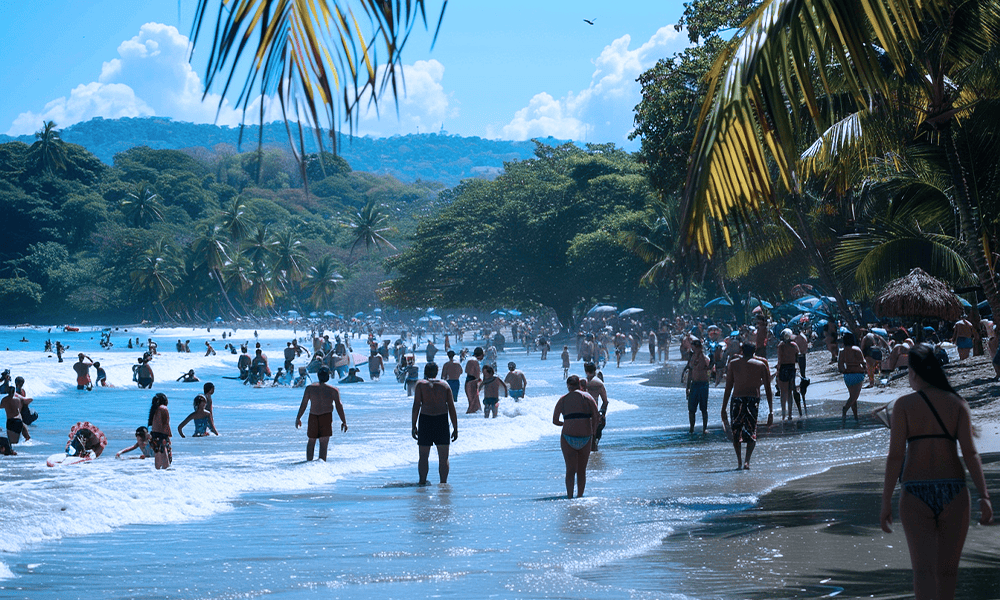Experts have issued a warning about rising temperatures and increased UV radiation expected in Costa Rica over the coming months. The National Meteorological Institute (IMN) has stated that between March and April, there will be elevated temperatures and a heightened sensation of heat, accompanied by intensified ultraviolet (UV) rays across the country.
Daniel Poleo, an expert from the IMN Climatology Unit, explained that during these two months, a phenomenon known as the Zenithal Sun will occur, causing the sun’s rays to strike more perpendicularly over Costa Rica.
“This situation results in greater solar intensity, making these months even hotter. While Easter is typically associated with heat, it will be even more intense this year,” the IMN expert highlighted.
Between March 15 and April 15, the country will experience a surge in perpendicular UV rays with higher radiation levels. UV exposure is primarily determined by the duration of sun exposure, with peak intensity typically occurring between 10 a.m. and 2 p.m.
“We anticipate a higher intensity of UV rays, although it’s important to note that UV intensity is not directly correlated with temperature,” Daniel Poleo added. According to dermatologists precautions must be taken to avoid severe sunburns and sun exposure that can lead to skn cancer.
The climatology expert also pointed out that “sunscreen alone is insufficient. Ideally, one should avoid exposure during peak hours, as radiation levels are extremely high.”
Contrary to popular belief, coastal areas do not experience stronger UV radiation. In fact, regions like the Central Valley and mountainous areas exhibit higher UV levels due to their altitude. “UV radiation is significantly lower on beaches due to their lower elevation,” added Poleo.
Areas such as the Irazú and Poás volcanoes are particularly susceptible to high levels of UV radiation, necessitating additional protection. In addition to UV concerns, temperatures in the coming months may soar, possibly reaching 40 degrees Celsius.
For those planning outdoor activities, it is recommended to use sunscreen with a high protection factor, which must be frequently applied, and sun exposure during peak hours of solar intensity must be avoided.






